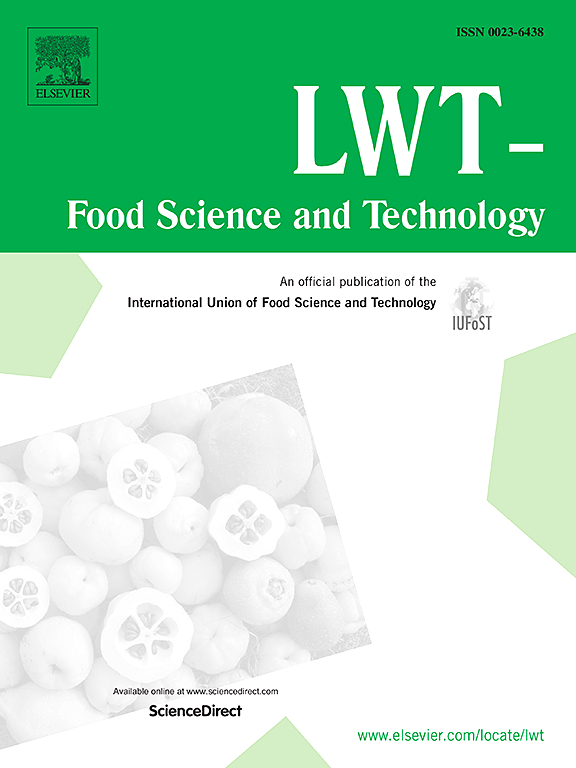Quality evaluation of delavayi juice pasteurized using a novel continuous high pressure processing technology: A combined numerical simulation and experimental analysis
IF 6
1区 农林科学
Q1 FOOD SCIENCE & TECHNOLOGY
引用次数: 0
Abstract
This study investigates the application of a self-designed continuous high pressure processing (CHP) system for the pasteurization of delavayi juice, emphasizing both numerical simulations of the equipment system and experimental quality evaluations of the juice. The treatment at 400 MPa indicated through numerical simulations that the juice achieved a peak velocity of 719 m/s, resulting in higher shear rates and improved mixing, which enhanced processing efficiency. The experimental analysis demonstrated that CHP significantly reduced the particle size of the juice to 0.01–1 μm (p < 0.05), improving its cloud stability. Compared to thermal pasteurization processing at 80 °C for 20 min, CHP better preserved the juice's original color, closely resembling that of untreated juice. Furthermore, CHP outperformed thermal methods in maintaining the flavor profile, particularly at 400 MPa, and proved more effective in preserving levels of vitamin C (30.45 mg/mL), total phenolics (27.97 mg rutin/mL), flavonoids (95.76 mg GAE/mL), and antioxidant activities (p > 0.05). This study highlights the potential of CHP as a high-throughput, efficient, and non-thermal pasteurization method for fruit juice, providing a viable alternative to traditional thermal treatments.

求助全文
约1分钟内获得全文
求助全文
来源期刊

LWT - Food Science and Technology
工程技术-食品科技
CiteScore
11.80
自引率
6.70%
发文量
1724
审稿时长
65 days
期刊介绍:
LWT - Food Science and Technology is an international journal that publishes innovative papers in the fields of food chemistry, biochemistry, microbiology, technology and nutrition. The work described should be innovative either in the approach or in the methods used. The significance of the results either for the science community or for the food industry must also be specified. Contributions written in English are welcomed in the form of review articles, short reviews, research papers, and research notes. Papers featuring animal trials and cell cultures are outside the scope of the journal and will not be considered for publication.
 求助内容:
求助内容: 应助结果提醒方式:
应助结果提醒方式:


